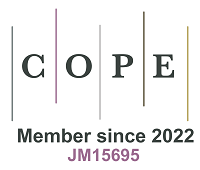REFERENCES
1. Zanatta A, Cherici C, Bargoni A, et al. Vincenzo Malacarne (1744-1816) and the first description of the human cerebellum. Cerebellum. 2018;17:461-4.
2. Pearce JM. Marie-Jean-Pierre Flourens (1794-1867) and cortical localization. Eur Neurol. 2009;61:311-4.
3. Turner WA. The cerebellum; new studies on normal and pathological physiology. J Anat Physiol. 1892;26:568-73.
4. Ferrier D, Turner WA. Record of experiments illustrative of the symptomatology and degenerations owing lesions of the cerebellum and its peduncles and related structures in nkeys. Proc R Soc Lond. 1894;185:719-78.
5. Russell JSR. II. Experimental researches into the functions of the cerebellum. Proc R Soc Lond. 1894;55:57-60.
7. Marie P. Cerebellar hereditary ataxia. Sem Med. 1893;13:444-7. Available from: https://scholar.google.com/scholar_lookup?&title=Sur%20l%E2%80%99h%C3%A9r%C3%A9do-ataxie%20c%C3%A9r%C3%A9belleuse&journal=Sem%20M%C3%A9d&volume=13&pages=444-447&publication_year=1893&author=Marie%2CP. [Last accessed on 13 Dec 2024].
8. Babinski J. Cerebellar asynergy. Rev Neurol. 1899;7:806-16. Available from: https://scholar.google.com/scholar?hl=en&as_sdt=0%2C5&q=Babinski+J.+De+l%E2%80%99asynergie+c%C3%A9r%C3%A9belleuse.+Rev+Neurol&btnG=. [Last accessed on 13 Dec 2024].
10. Holmes G. The symptoms of acute cerebellar injuries due to gunshot injuries. Brain. 1917;40:461-535.
12. Schmahmann JD. An emerging concept. The cerebellar contribution to higher function. Arch Neurol. 1991;48:1178-87.
14. Schmahmann JD. Dysmetria of thought: clinical consequences of cerebellar dysfunction on cognition and affect. Trends Cogn Sci. 1998;2:362-71.
15. Schmahmann JD. The role of the cerebellum in affect and psychosis. J Neurolinguist. 2000;13:189-214.
16. Schmahmann JD. Disorders of the cerebellum: ataxia, dysmetria of thought, and the cerebellar cognitive affective syndrome. J Neuropsych. 2004;16:367-78.
17. Schmahmann JD, Pandya DN. Anatomical investigation of projections to the basis pontis from posterior parietal association cortices in rhesus monkey. J Comp Neurol. 1989;289:53-73.
19. Middleton FA, Strick PL. Anatomical evidence for cerebellar and basal ganglia involvement in higher cognitive function. Science. 1994;266:458-61.
20. Levisohn L, Cronin-Golomb A, Schmahmann JD. Neuropsychological consequences of cerebellar tumour resection in children: cerebellar cognitive affective syndrome in a paediatric population. Brain. 2000;123:1041-50.
21. Manto M, Mariën P. Schmahmann’s syndrome - identification of the third cornerstone of clinical ataxiology. Cerebellum Ataxias. 2015;2:2.
22. Stoodley CJ, Valera EM, Schmahmann JD. Functional topography of the cerebellum for motor and cognitive tasks: an fMRI study. Neuroimage. 2012;59:1560-70.
23. Stoodley CJ, Valera EM, Schmahmann JD. An fMRI study of intra-individual functional topography in the human cerebellum. Behavioural Neurology. 2010;23:65-79.
25. Li T, Le W, Jankovic J. Linking the cerebellum to Parkinson disease: an update. Nat Rev Neurol. 2023;19:645-54.
26. Iskusnykh IY, Zakharova AA, Kryl’skii ED, Popova TN. Aging, neurodegenerative disorders, and cerebellum. Int J Mol Sci. 2024;25:1018.
27. Ding W, Ding LJ, Li FF, Han Y, Mu L. Neurodegeneration and cognition in Parkinson’s disease: a review. Eur Rev Med Pharmacol Sci. 2015;19:2275-81.
28. Schapira AHV, Chaudhuri KR, Jenner P. Non-motor features of Parkinson disease. Nat Rev Neurosci. 2017;18:435-50.
29. Gonzales MM, Garbarino VR, Pollet E, et al. Biological aging processes underlying cognitive decline and neurodegenerative disease. J Clin Invest. 2022;132:e158453.
31. Mugnaini E, Sekerková G, Martina M. The unipolar brush cell: a remarkable neuron finally receiving deserved attention. Brain Res Rev. 2011;66:220-45.
32. Stoodley CJ, MacMore JP, Makris N, Sherman JC, Schmahmann JD. Location of lesion determines motor vs. cognitive consequences in patients with cerebellar stroke. Neuroimage Clin. 2016;12:765-75.
33. Gok-Dursun E, Gultekin-Zaim OB, Tan E, Unal-Cevik I. Cognitive impairment and affective disorder: a rare presentation of cerebellar stroke. Clin Neurol Neurosurg. 2021;206:106690.
34. Bushara KO, Wheat JM, Khan A, et al. Multiple tactile maps in the human cerebellum. Neuroreport. 2001;12:2483-6.
35. Rijntjes M, Buechel C, Kiebel S, Weiller C. Multiple somatotopic representations in the human cerebellum. Neuroreport. 1999;10:3653-8.
36. Schmahmann JD. From movement to thought: anatomic substrates of the cerebellar contribution to cognitive processing. Hum Brain Mapp. 1996;4:174-98.
37. Kelly RM, Strick PL. Cerebellar loops with motor cortex and prefrontal cortex of a nonhuman primate. J Neurosci. 2003;23:8432-44.
38. Dum RP, Strick PL. An unfolded map of the cerebellar dentate nucleus and its projections to the cerebral cortex. J Neurophysiol. 2003;89:634-9.
39. Palesi F, Tournier JD, Calamante F, et al. Contralateral cerebello-thalamo-cortical pathways with prominent involvement of associative areas in humans in vivo. Brain Struct Funct. 2015;220:3369-84.
40. Palesi F, De Rinaldis A, Castellazzi G, et al. Contralateral cortico-ponto-cerebellar pathways reconstruction in humans in vivo: implications for reciprocal cerebro-cerebellar structural connectivity in motor and non-motor areas. Sci Rep. 2017;7:12841.
41. Guell X, Schmahmann JD, Gabrieli JDE, Ghosh SS. Functional gradients of the cerebellum. Elife. 2018;7:e36652.
42. Buckner RL, Krienen FM, Castellanos A, Diaz JC, Yeo BT. The organization of the human cerebellum estimated by intrinsic functional connectivity. J Neurophysiol. 2011;106:2322-45.
43. Middleton FA, Strick PL. Basal ganglia and cerebellar loops: motor and cognitive circuits. Brain Res Brain Res Rev. 2000;31:236-50.
44. Percheron G, François C, Talbi B, Yelnik J, Fénelon G. The primate motor thalamus. Brain Res Brain Res Rev. 1996;22:93-181.
46. Bostan AC, Dum RP, Strick PL. The basal ganglia communicate with the cerebellum. Proc Natl Acad Sci U S A. 2010;107:8452-6.
47. De Benedictis A, Rossi-Espagnet MC, de Palma L, Carai A, Marras CE. Networking of the human cerebellum: from anatomo-functional development to neurosurgical implications. Front Neurol. 2022;13:806298.
48. Quartarone A, Cacciola A, Milardi D, et al. New insights into cortico-basal-cerebellar connectome: clinical and physiological considerations. Brain. 2020;143:396-406.
49. Milardi D, Arrigo A, Anastasi G, et al. Extensive direct subcortical cerebellum-basal ganglia connections in human brain as revealed by constrained spherical deconvolution tractography. Front Neuroanat. 2016;10:29.
50. Doya K. Complementary roles of basal ganglia and cerebellum in learning and motor control. Curr Opin Neurobiol. 2000;10:732-9.
51. O’Doherty JP, Dayan P, Friston K, Critchley H, Dolan RJ. Temporal difference models and reward-related learning in the human brain. Neuron. 2003;38:329-37.
52. Silveri MC. Contribution of the cerebellum and the basal ganglia to language production: speech, word fluency, and sentence construction-evidence from pathology. Cerebellum. 2021;20:282-94.
53. Carta I, Chen CH, Schott AL, Dorizan S, Khodakhah K. Cerebellar modulation of the reward circuitry and social behavior. Science. 2019;363:eaav0581.
54. Watson TC, Obiang P, Torres-Herraez A, et al. Anatomical and physiological foundations of cerebello-hippocampal interaction. Elife. 2019;8:e41896.
55. Arrigo A, Mormina E, Anastasi GP, et al. Constrained spherical deconvolution analysis of the limbic network in human, with emphasis on a direct cerebello-limbic pathway. Front Hum Neurosci. 2014;8:987.
56. Fan L, Hu J, Ma W, Wang D, Yao Q, Shi J. Altered baseline activity and connectivity associated with cognitive impairment following acute cerebellar infarction: a resting-state fMRI study. Neurosci Lett. 2019;692:199-203.
57. James KA, Stromin JI, Steenkamp N, Combrinck MI. Understanding the relationships between physiological and psychosocial stress, cortisol and cognition. Front Endocrinol. 2023;14:1085950.
58. He YC, Wu GY, Li D, et al. Histamine promotes rat motor performances by activation of H2 receptors in the cerebellar fastigial nucleus. Behav Brain Res. 2012;228:44-52.
59. Zhang XY, Yu L, Zhuang QX, Zhang J, Zhu JN, Wang JJ. Hypothalamic histaminergic and orexinergic modulation on cerebellar and vestibular motor control. Cerebellum. 2013;12:294-6.
60. Li B, Zhu JN, Wang JJ. Histaminergic afferent system in the cerebellum: structure and function. Cerebellum Ataxias. 2014;1:5.
61. Zhang J, Zhuang QX, Li B, et al. Selective modulation of histaminergic inputs on projection neurons of cerebellum rapidly promotes motor coordination via HCN channels. Mol Neurobiol. 2016;53:1386-401.
62. Zhang XY, Wu WX, Shen LP, et al. A role for the cerebellum in motor-triggered alleviation of anxiety. Neuron. 2024;112:1165-81.e8.
63. Haines DE, Dietrichs E, Mihailoff GA, Mcdonald EF. The cerebellar-hypothalamic axis: basic circuits and clinical observations. Int Rev Neurobiol. 1997;41:83-107.
64. Zhu JN, Yung WH, Kwok-Chong Chow B, Chan YS, Wang JJ. The cerebellar-hypothalamic circuits: potential pathways underlying cerebellar involvement in somatic-visceral integration. Brain Res Rev. 2006;52:93-106.
66. Phelps EA. Emotion and cognition: insights from studies of the human amygdala. Annu Rev Psychol. 2006;57:27-53.
68. Petersen SE, Fox PT, Posner MI, Mintun M, Raichle ME. Positron emission tomographic studies of the cortical anatomy of single-word processing. Nature. 1988;331:585-9.
69. Moberget T, Gullesen EH, Andersson S, Ivry RB, Endestad T. Generalized role for the cerebellum in encoding internal models: evidence from semantic processing. J Neurosci. 2014;34:2871-8.
70. D’Mello AM, Turkeltaub PE, Stoodley CJ. Cerebellar tDCS modulates neural circuits during semantic prediction: a combined tDCS-fMRI study. J Neurosci. 2017;37:1604-13.
71. Yuan Q, Li H, Du B, et al. The cerebellum and cognition: further evidence for its role in language control. Cereb Cortex. 2022;33:35-49.
72. Larry N, Zur G, Joshua M. Organization of reward and movement signals in the basal ganglia and cerebellum. Nat Commun. 2024;15:2119.
73. Carruzzo F, Giarratana AO, Del Puppo L, Kaiser S, Tobler PN, Kaliuzhna M. Neural bases of reward anticipation in healthy individuals with low, mid, and high levels of schizotypy. Sci Rep. 2023;13:9953.
74. Li Y, Yang L, Li L, Xie Y, Fang P. The resting-state cerebro-cerebellar function connectivity and associations with verbal working memory performance. Behav Brain Res. 2022;417:113586.
75. Bezdicek O, Ballarini T, Albrecht F, et al. SERIAL-ORDER recall in working memory across the cognitive spectrum of Parkinson’s disease and neuroimaging correlates. J Neuropsychol. 2021;15:88-111.
76. Sako W, Abe T, Matsumoto Y, et al. The cerebellum is a common key for visuospatial execution and attention in Parkinson’s disease. Diagnostics. 2021;11:1042.
77. Tani T, Sakai Y. Stuttering after right cerebellar infarction: a case study. J Fluency Disord. 2010;35:141-5.
78. Guell X, Hoche F, Schmahmann JD. Metalinguistic deficits in patients with cerebellar dysfunction: empirical support for the dysmetria of thought theory. Cerebellum. 2015;14:50-8.
79. Wagner MJ, Kim TH, Savall J, Schnitzer MJ, Luo L. Cerebellar granule cells encode the expectation of reward. Nature. 2017;544:96-100.
80. Heffley W, Song EY, Xu Z, et al. Coordinated cerebellar climbing fiber activity signals learned sensorimotor predictions. Nat Neurosci. 2018;21:1431-41.
81. Heffley W, Hull C. Classical conditioning drives learned reward prediction signals in climbing fibers across the lateral cerebellum. Elife. 2019;8:e46764.
82. Kostadinov D, Beau M, Blanco-Pozo M, Häusser M. Predictive and reactive reward signals conveyed by climbing fiber inputs to cerebellar Purkinje cells. Nat Neurosci. 2019;22:950-62.
83. Larry N, Yarkoni M, Lixenberg A, Joshua M. Cerebellar climbing fibers encode expected reward size. Elife. 2019;8:e46870.
84. Ohmae S, Medina JF. Climbing fibers encode a temporal-difference prediction error during cerebellar learning in mice. Nat Neurosci. 2015;18:1798-803.
85. Kruithof ES, Klaus J, Schutter DJLG. The human cerebellum in reward anticipation and outcome processing: an activation likelihood estimation meta-analysis. Neurosci Biobehav Rev. 2023;149:105171.
86. Nicholas J, Amlang C, Lin CR, et al. The role of the cerebellum in learning to predict reward: evidence from cerebellar ataxia. Cerebellum. 2024;23:1355-68.
87. Jang DC, Shim HG, Kim SJ. Intrinsic plasticity of cerebellar purkinje cells contributes to motor memory consolidation. J Neurosci. 2020;40:4145-57.
88. Jang DC, Chung G, Kim SK, Kim SJ. Dynamic alteration of intrinsic properties of the cerebellar Purkinje cell during the motor memory consolidation. Mol Brain. 2023;16:58.
89. Chen X, Du Y, Broussard GJ, et al. Transcriptomic mapping uncovers Purkinje neuron plasticity driving learning. Nature. 2022;605:722-7.
90. Edde M, Di Scala G, Dupuy M, Dilharreguy B, Catheline G, Chanraud S. Learning-driven cerebellar intrinsic functional connectivity changes in men. J Neurosci Res. 2020;98:668-79.
91. Fibiger HC, Phillips AG. Mesocorticolimbic dopamine systems and reward. Ann N Y Acad Sci. 1988;537:206-15.
93. Yoshida J, Oñate M, Khatami L, Vera J, Nadim F, Khodakhah K. Cerebellar contributions to the basal ganglia influence motor coordination, reward processing, and movement vigor. J Neurosci. 2022;42:8406-15.
94. Hurley MJ, Mash DC, Jenner P. Markers for dopaminergic neurotransmission in the cerebellum in normal individuals and patients with Parkinson’s disease examined by RT-PCR. Eur J Neurosci. 2003;18:2668-72.
95. Giompres P, Delis F. Dopamine transporters in the cerebellum of mutant mice. Cerebellum. 2005;4:105-11.
96. Seese RR. Working memory impairments in cerebellar disorders of childhood. Pediatr Neurol. 2020;107:16-23.
97. Gottwald B, Wilde B, Mihajlovic Z, Mehdorn HM. Evidence for distinct cognitive deficits after focal cerebellar lesions. J Neurol Neurosurg Psychiatry. 2004;75:1524-31.
98. Ravizza SM, McCormick CA, Schlerf JE, Justus T, Ivry RB, Fiez JA. Cerebellar damage produces selective deficits in verbal working memory. Brain. 2006;129:306-20.
99. de Ribaupierre S, Ryser C, Villemure JG, Clarke S. Cerebellar lesions: is there a lateralisation effect on memory deficits?. Acta Neurochir. 2008;150:545-50; discussion 550.
100. Won J, Callow DD, Purcell JJ, Smith JC. Differential associations of regional cerebellar volume with gait speed and working memory. Sci Rep. 2022;12:2355.
101. Brissenden JA, Tobyne SM, Halko MA, Somers DC. Stimulus-specific visual working memory representations in human cerebellar lobule VIIb/VIIIa. J Neurosci. 2021;41:1033-45.
102. Yao J, Song B, Shi J, Yin K, Du W. Effects of repetitive transcranial magnetic stimulation at the cerebellum on working memory. Brain Sci. 2023;13:1158.
103. Viñas-Guasch N, Ng THB, Heng JG, et al. Cerebellar transcranial magnetic stimulation (TMS) impairs visual working memory. Cerebellum. 2023;22:332-47.
104. Botez MI. The neuropsychology of the cerebellum: an emerging concept. Arch Neurol. 1992;49:1229-30.
105. Molinari M, Leggio MG. Cerebellar information processing and visuospatial functions. Cerebellum. 2007;6:214-20.
106. Molinari M, Leggio MG, Solida A, et al. Cerebellum and procedural learning: evidence from focal cerebellar lesions. Brain. 1997;120:1753-62.
107. Petrosini L, Leggio MG, Molinari M. The cerebellum in the spatial problem solving: a co-star or a guest star?. Prog Neurobiol. 1998;56:191-210.
108. Joyal CC, Strazielle C, Lalonde R. Effects of dentate nucleus lesions on spatial and postural sensorimotor learning in rats. Behav Brain Res. 2001;122:131-7.
109. Locke TM, Soden ME, Miller SM, et al. Dopamine D1 receptor-positive neurons in the lateral nucleus of the cerebellum contribute to cognitive behavior. Biol Psychiatry. 2018;84:401-12.
110. Andre P, Zaccaroni M, Fiorenzani P, Della Seta D, Menzocchi M, Farabollini F. Offline consolidation of spatial memory: do the cerebellar output circuits play a role? A study utilizing a Morris water maze protocol in male Wistar rats. Brain Res. 2019;1718:148-58.
111. GBD 2015 Disease and Injury Incidence and Prevalence Collaborators. Global, regional, and national incidence, prevalence, and years lived with disability for 310 diseases and injuries, 1990-2015: a systematic analysis for the Global Burden of Disease Study 2015. Lancet. 2016;388:1545-602.
113. Andersen BB, Gundersen HJ, Pakkenberg B. Aging of the human cerebellum: a stereological study. J Comp Neurol. 2003;466:356-65.
114. Chen J, Cohen ML, Lerner AJ, Yang Y, Herrup K. DNA damage and cell cycle events implicate cerebellar dentate nucleus neurons as targets of Alzheimer’s disease. Mol Neurodegener. 2010;5:60.
115. Tripathi SM, Murray AD, Wischik CM, Schelter B. Crossed cerebellar diaschisis in Alzheimer’s disease. Nucl Med Commun. 2022;43:423-7.
116. Mirino P, Pecchinenda A, Boccia M, Capirchio A, D’Antonio F, Guariglia C. Cerebellum-cortical interaction in spatial navigation and its alteration in dementias. Brain Sci. 2022;12:523.
117. Yao Q, Tang F, Wang Y, et al. Effect of cerebellum stimulation on cognitive recovery in patients with Alzheimer disease: a randomized clinical trial. Brain Stimul. 2022;15:910-20.
118. Liang KJ, Carlson ES. Resistance, vulnerability and resilience: a review of the cognitive cerebellum in aging and neurodegenerative diseases. Neurobiol Learn Mem. 2020;170:106981.
119. Xu HT, Xi XY, Zhou S, et al. Histaminergic innervation of the ventral anterior thalamic nucleus alleviates motor deficits in a 6-OHDA-induced rat model of Parkinson’s disease. Neurosci Bull 2024.
120. Solano SM, Miller DW, Augood SJ, Young AB, Penney JB Jr. Expression of alpha-synuclein, parkin, and ubiquitin carboxy-terminal hydrolase L1 mRNA in human brain: genes associated with familial Parkinson’s disease. Ann Neurol. 2000;47:201-10.
121. Seidel K, Bouzrou M, Heidemann N, et al. Involvement of the cerebellum in Parkinson disease and dementia with Lewy bodies. Ann Neurol. 2017;81:898-903.
122. Thomasson M, Benis D, Voruz P, et al. Crossed functional specialization between the basal ganglia and cerebellum during vocal emotion decoding: insights from stroke and Parkinson’s disease. Cogn Affect Behav Neurosci. 2022;22:1030-43.
123. Riou A, Houvenaghel JF, Dondaine T, et al. Functional role of the cerebellum in Parkinson disease: a PET study. Neurology. 2021;96:e2874-84.
124. Arioli M, Cattaneo Z, Rusconi ML, Blandini F, Tettamanti M. Action and emotion perception in Parkinson’s disease: a neuroimaging meta-analysis. Neuroimage Clin. 2022;35:103031.
125. Grimaldi G, Manto M. Anodal transcranial direct current stimulation (tDCS) decreases the amplitudes of long-latency stretch reflexes in cerebellar ataxia. Ann Biomed Eng. 2013;41:2437-47.
126. Grimaldi G, Oulad Ben Taib N, Manto M, Bodranghien F. Marked reduction of cerebellar deficits in upper limbs following transcranial cerebello-cerebral DC stimulation: tremor reduction and re-programming of the timing of antagonist commands. Front Syst Neurosci. 2014;8:9.
127. Benussi A, Koch G, Cotelli M, Padovani A, Borroni B. Cerebellar transcranial direct current stimulation in patients with ataxia: a double-blind, randomized, sham-controlled study. Mov Disord. 2015;30:1701-5.
128. Benussi A, Dell’Era V, Cotelli MS, et al. Long term clinical and neurophysiological effects of cerebellar transcranial direct current stimulation in patients with neurodegenerative ataxia. Brain Stimul. 2017;10:242-50.
129. Bodranghien F, Oulad Ben Taib N, Van Maldergem L, Manto M. A postural tremor highly responsive to transcranial cerebello-cerebral DCS in ARCA3. Front Neurol. 2017;8:71.
130. Grecco LA, Oliveira CS, Duarte NA, Lima VL, Zanon N, Fregni F. Cerebellar transcranial direct current stimulation in children with ataxic cerebral palsy: a sham-controlled, crossover, pilot study. Dev Neurorehabil. 2017;20:142-8.
131. Benussi A, Dell’Era V, Cantoni V, et al. Cerebello-spinal tDCS in ataxia: a randomized, double-blind, sham-controlled, crossover trial. Neurology. 2018;91:e1090-101.
132. Benussi A, Cantoni V, Manes M, et al. Motor and cognitive outcomes of cerebello-spinal stimulation in neurodegenerative ataxia. Brain. 2021;144:2310-21.
133. Naeije G, Rovai A, Destrebecq V, Trotta N, De Tiège X. Anodal cerebellar transcranial direct current stimulation reduces motor and cognitive symptoms in Friedreich’s ataxia: a randomized, sham-controlled trial. Mov Disord. 2023;38:1443-50.
134. Farzan F, Wu Y, Manor B, et al. Cerebellar TMS in treatment of a patient with cerebellar ataxia: evidence from clinical, biomechanics and neurophysiological assessments. Cerebellum. 2013;12:707-12.
135. Bonnì S, Ponzo V, Caltagirone C, Koch G. Cerebellar theta burst stimulation in stroke patients with ataxia. Funct Neurol 2014. Available from: https://www.semanticscholar.org/paper/Cerebellar-theta-burst-stimulation-in-stroke-with-Bonn%C3%AC-Ponzo/90efef491f1758d1471bac14c93fdac91256097f. [Last accessed on 11 Dec 2024].
136. Kim WS, Jung SH, Oh MK, Min YS, Lim JY, Paik NJ. Effect of repetitive transcranial magnetic stimulation over the cerebellum on patients with ataxia after posterior circulation stroke: a pilot study. J Rehabil Med. 2014;46:418-23.
137. Cury RG, Teixeira MJ, Galhardoni R, et al. Neuronavigation-guided transcranial magnetic stimulation of the dentate nucleus improves cerebellar ataxia: a sham-controlled, double-blind n = 1 study. Parkinsonism Relat Disord. 2015;21:999-1001.
138. Dang G, Su X, Zhou Z, et al. Beneficial effects of cerebellar rTMS stimulation on a patient with spinocerebellar ataxia type 6. Brain Stimul. 2019;12:767-9.
139. França C, de Andrade DC, Silva V, et al. Effects of cerebellar transcranial magnetic stimulation on ataxias: a randomized trial. Parkinsonism Relat Disord. 2020;80:1-6.
140. Teixeira MJ, Cury RG, Galhardoni R, et al. Deep brain stimulation of the dentate nucleus improves cerebellar ataxia after cerebellar stroke. Neurology. 2015;85:2075-6.
141. Miterko LN, Lin T, Zhou J, et al. Neuromodulation of the cerebellum rescues movement in a mouse model of ataxia. Nat Commun. 2021;12:1295.
142. Ferrucci R, Cortese F, Bianchi M, et al. Cerebellar and motor cortical transcranial stimulation decrease levodopa-induced dyskinesias in Parkinson’s disease. Cerebellum. 2016;15:43-7.
143. Málly J, Stone TW, Sinkó G, Geisz N, Dinya E. Long term follow-up study of non-invasive brain stimulation (NBS) (rTMS and tDCS) in Parkinson’s disease (PD). Strong age-dependency in the effect of NBS. Brain Res Bull. 2018;142:78-87.
144. Workman CD, Fietsam AC, Uc EY, Rudroff T. Cerebellar transcranial direct current stimulation in people with Parkinson’s disease: a pilot study. Brain Sci. 2020;10:96.
145. Koch G, Brusa L, Carrillo F, et al. Cerebellar magnetic stimulation decreases levodopa-induced dyskinesias in Parkinson disease. Neurology. 2009;73:113-9.
146. Minks E, Mareček R, Pavlík T, Ovesná P, Bareš M. Is the cerebellum a potential target for stimulation in Parkinson’s disease? Results of 1-Hz rTMS on upper limb motor tasks. Cerebellum. 2011;10:804-11.
147. Brusa L, Ceravolo R, Kiferle L, et al. Metabolic changes induced by theta burst stimulation of the cerebellum in dyskinetic Parkinson’s disease patients. Parkinsonism Relat Disord. 2012;18:59-62.
148. Bologna M, Di Biasio F, Conte A, Iezzi E, Modugno N, Berardelli A. Effects of cerebellar continuous theta burst stimulation on resting tremor in Parkinson’s disease. Parkinsonism Relat Disord. 2015;21:1061-6.
149. Di Biasio F, Conte A, Bologna M, et al. Does the cerebellum intervene in the abnormal somatosensory temporal discrimination in Parkinson’s disease?. Parkinsonism Relat Disord. 2015;21:789-92.
150. Lefaivre SC, Brown MJ, Almeida QJ. Cerebellar involvement in Parkinson’s disease resting tremor. Cerebellum Ataxias. 2016;3:13.
151. Di Lorenzo F, Martorana A, Ponzo V, et al. Cerebellar theta burst stimulation modulates short latency afferent inhibition in Alzheimer’s disease patients. Front Aging Neurosci. 2013;5:2.
152. Demirtas-Tatlidede A, Freitas C, Cromer JR, et al. Safety and proof of principle study of cerebellar vermal theta burst stimulation in refractory schizophrenia. Schizophr Res. 2010;124:91-100.
153. Minichino A, Bersani FS, Bernabei L, et al. Prefronto-cerebellar transcranial direct current stimulation improves visuospatial memory, executive functions, and neurological soft signs in patients with euthymic bipolar disorder. Neuropsychiatr Dis Treat. 2015;11:2265-70.
154. Sebastian R, Saxena S, Tsapkini K, et al. Cerebellar tDCS: a novel approach to augment language treatment post-stroke. Front Hum Neurosci. 2016;10:695.
155. Stezin A, Bhardwaj S, Hegde S, et al. Cognitive impairment and its neuroimaging correlates in spinocerebellar ataxia 2. Parkinsonism Relat Disord. 2021;85:78-83.
156. Gigante AF, Lelli G, Romano R, et al. The relationships between ataxia and cognition in spinocerebellar ataxia type 2. Cerebellum. 2020;19:40-7.
157. Cundari M, Vestberg S, Gustafsson P, Gorcenco S, Rasmussen A. Neurocognitive and cerebellar function in ADHD, autism and spinocerebellar ataxia. Front Syst Neurosci. 2023;17:1168666.
158. Orsi L, D’Agata F, Caroppo P, et al. Neuropsychological picture of 33 spinocerebellar ataxia cases. J Clin Exp Neuropsychol. 2011;33:315-25.
159. Naeije G, Schulz JB, Corben LA. The cognitive profile of Friedreich ataxia: a systematic review and meta-analysis. BMC Neurol. 2022;22:97.
160. Radmard S, Zesiewicz TA, Kuo SH. Evaluation of cerebellar ataxic patients. Neurol Clin. 2023;41:21-44.
161. Karamazovova S, Matuskova V, Ismail Z, Vyhnalek M. Neuropsychiatric symptoms in spinocerebellar ataxias and Friedreich ataxia. Neurosci Biobehav Rev. 2023;150:105205.
162. Lin CR, Kuo SH, Opal P. Cognitive, emotional, and other non-motor symptoms of spinocerebellar ataxias. Curr Neurol Neurosci Rep. 2024;24:47-54.
163. Stanley AT, Post MR, Lacefield C, Sulzer D, Miniaci MC. Norepinephrine release in the cerebellum contributes to aversive learning. Nat Commun. 2023;14:4852.
164. Li ZH, Li B, Zhang XY, Zhu JN. Neuropeptides and their roles in the cerebellum. Int J Mol Sci. 2024;25:2332.
165. Shen LP, Li W, Pei LZ, et al. Oxytocin receptor in cerebellar purkinje cells does not engage in autism-related behaviors. Cerebellum. 2023;22:888-904.
166. Wang Y, Chen ZP, Zhuang QX, et al. Role of corticotropin-releasing factor in cerebellar motor control and ataxia. Curr Biol. 2017;27:2661-69.e5.
167. Yu L, Zhang XY, Zhang J, Zhu JN, Wang JJ. Orexins excite neurons of the rat cerebellar nucleus interpositus via orexin 2 receptors in vitro. Cerebellum. 2010;9:88-95.
168. Cotelli M, Calabria M, Manenti R, et al. Improved language performance in Alzheimer disease following brain stimulation. J Neurol Neurosurg Psychiatry. 2011;82:794-7.
169. Ahmed MA, Darwish ES, Khedr EM, El Serogy YM, Ali AM. Effects of low versus high frequencies of repetitive transcranial magnetic stimulation on cognitive function and cortical excitability in Alzheimer’s dementia. J Neurol. 2012;259:83-92.
170. Drumond Marra HL, Myczkowski ML, Maia Memória C, et al. Transcranial magnetic stimulation to address mild cognitive impairment in the elderly: a randomized controlled study. Behav Neurol. 2015;2015:287843.
171. Rabey JM, Dobronevsky E. Repetitive transcranial magnetic stimulation (rTMS) combined with cognitive training is a safe and effective modality for the treatment of Alzheimer’s disease: clinical experience. J Neural Transm. 2016;123:1449-55.
172. Zhao J, Li Z, Cong Y, et al. Repetitive transcranial magnetic stimulation improves cognitive function of Alzheimer’s disease patients. Oncotarget. 2017;8:33864-71.
173. Koch G, Bonnì S, Pellicciari MC, et al. Transcranial magnetic stimulation of the precuneus enhances memory and neural activity in prodromal Alzheimer’s disease. Neuroimage. 2018;169:302-11.
174. Padala PR, Padala KP, Lensing SY, et al. Repetitive transcranial magnetic stimulation for apathy in mild cognitive impairment: a double-blind, randomized, sham-controlled, cross-over pilot study. Psychiatry Res. 2018;261:312-8.
175. Zhang F, Qin Y, Xie L, Zheng C, Huang X, Zhang M. High-frequency repetitive transcranial magnetic stimulation combined with cognitive training improves cognitive function and cortical metabolic ratios in Alzheimer’s disease. J Neural Transm. 2019;126:1081-94.
176. Bagattini C, Zanni M, Barocco F, et al. Enhancing cognitive training effects in Alzheimer’s disease: rTMS as an add-on treatment. Brain Stimul. 2020;13:1655-64.
177. Brem AK, Di Iorio R, Fried PJ, et al. Corticomotor plasticity predicts clinical efficacy of combined neuromodulation and cognitive training in Alzheimer’s disease. Front Aging Neurosci. 2020;12:200.
178. Padala PR, Boozer EM, Lensing SY, et al. Neuromodulation for apathy in Alzheimer’s disease: a double-blind, randomized, sham-controlled pilot study. J Alzheimers Dis. 2020;77:1483-93.







